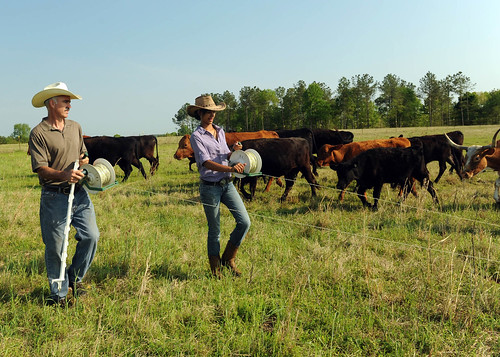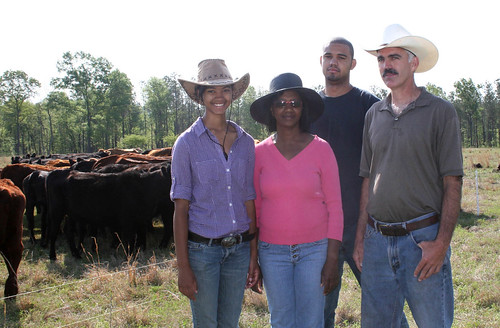
On a spring day in Chesterfield, South Carolina, a family works in unison to manage cattle, sheep and goats. This is a daily routine and a way of life for Paxton Pegues, his wife Olivia, and their four children Rachel, Marcellus, Spencer, and Lanier.
A tenth-generation farm family that has deep roots in the county, the Pegues are proud of the 319-acre area they call the Carolina Nature Conservancy. They are dedicated to improving wildlife habitat, controlling invasive species and establishing native grasses, and to managing their land without the use of commercial fertilizers, chemicals or parasite control agents.
The Pegues’ goal is to return this land to its original state, when open grasslands and sparsely wooded areas were grazed by animals. They work closely with USDA’s Natural Resources Conservation Service (NRCS) to implement conservation practices that will help them achieve this goal.

The family’s exemplary stewardship efforts were recently recognized when they were named the 2010 Farmers of the Year by the Chesterfield Soil and Water Conservation District.
Through the NRCS Environmental Quality Incentives Program (EQIP) Organic Initiative, these dedicated conservationists have implemented organic nutrient and pest management plans, installed a well and water tanks, and developed a grazing plan. In addition, they have installed over 3,000 feet of permanent fence to exclude livestock from a stream and wetland area adjacent to their pasture, protecting water quality.
Their unique rotational grazing system utilizes temporary fencing and roughly 4,000 feet of permanent water line with quick-valve connections that allow the use of three portable water tanks. Future goals involve installing a solar pumping station to harness the sun’s energy to provide water for the livestock on another portion of the property.
Through NRCS’ Conservation Stewardship Program (CSP), the Pegues also monitor key grazing areas and adjust their livestock management appropriately. They limit the amount of fertilizer and feed brought onto the farm, rotate supplemental mineral and feeding areas, and limit livestock access to surface water sources—all of which further protect water quality. Silvopasture is another practice that the family hopes to integrate into their operation through CSP, which will allow them to manage timber and pasture as a single integrated system.
NRCS District Conservationist Charles Babb works closely with the family on their farm. “This family truly loves what they do, and they have taught us a lot about organic methods and techniques,” said Babb.
Check out more conservation stories on the USDA blog

